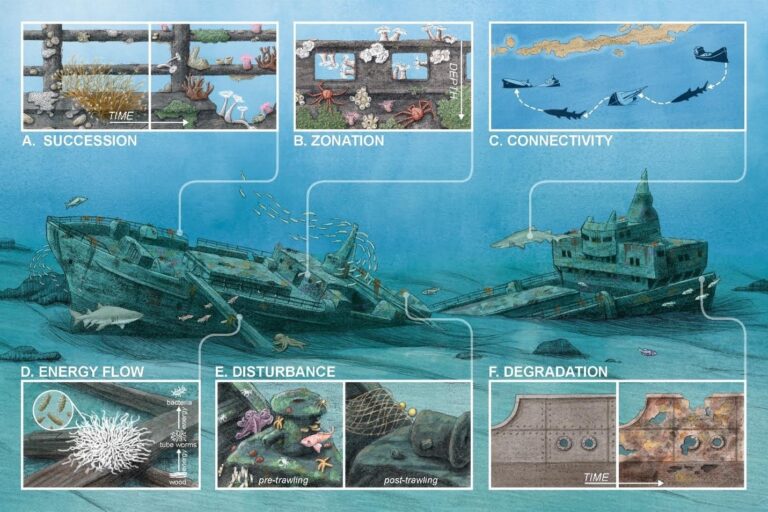Scientists Study Shipwrecks to Understand Underwater Ecology
Posted
Last Updated
In a newly published paper in BioScience, NCCOS scientists collaborated with an international team of ecologists and archaeologists to describe how shipwrecks provide a unique opportunity to study complex ecological processes. The synthesis focuses on a range of fundamental ecological functions and processes and how they manifest on and around shipwrecks.
From large sailing vessels, to small dinghies or rafts, wrecked vessels provide artificial structure and materials that are starkly different from the surrounding ecosystem. Scientists have found that shipwrecks offer valuable ecological resources by becoming homes for a wide variety of organisms, from tiny microbes to large marine creatures. Microorganisms, algae, and invertebrates like corals and sponges grow on submerged debris and materials. Small fish and mobile crustaceans often find shelter in the crevices of the sunken material, and larger baitfish and predators use shipwrecks as feeding grounds and rest stops as they swim from one place to another. While shipwrecks can act as “biodiversity hotspots”, they can also harbor invasive species, cause damage to existing habitat in the surrounding area, or carry harmful cargo, such as oil.
There are an estimated three million shipwrecks scattered across the ocean floor, rivers, and lake beds, many of which have been reclaimed by aquatic life. These elusive relics are classified as “Underwater Cultural Heritage” by UNESCO, and they represent tangible remains of past human behavior and cultural heritage. While shipwrecks are well-recognized as cultural icons, they are also ecological treasures because they create homes for underwater life. Across the globe, shipwrecks provide ideal “experimental” habitats that can be studied to address long-standing and intriguing ecological questions.

